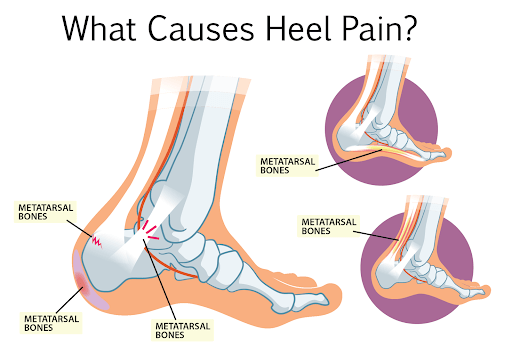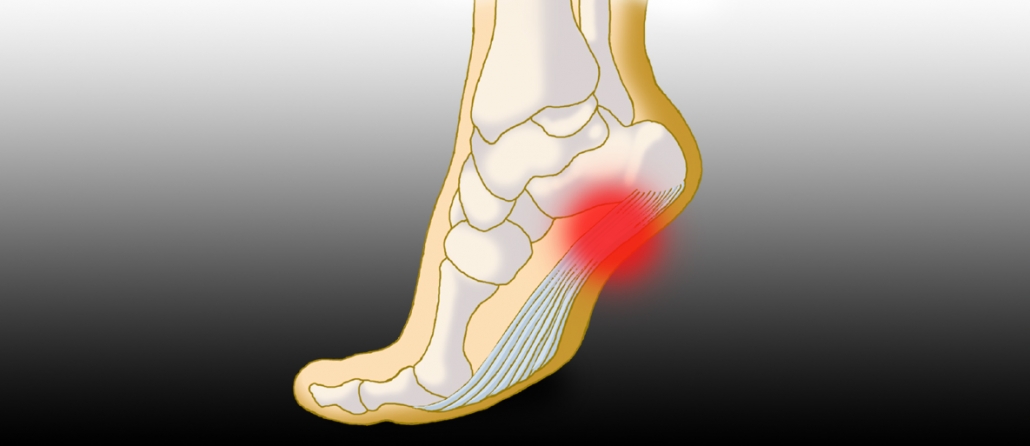Introduction to Heel Pain
Heel pain is a common complaint that can affect individuals of all ages and lifestyles. It can significantly impact mobility and quality of life, making everyday activities challenging. Understanding the underlying causes of heel pain and exploring effective treatment options is crucial for finding relief and restoring function.
Common Causes of Heel Pain
- Plantar Fasciitis
Plantar fasciitis is one of the most prevalent causes of heel pain, characterized by inflammation of the plantar fascia—a thick band of tissue that runs along the bottom of the foot, connecting the heel bone to the toes. - Achilles Tendinitis
Achilles tendinitis occurs when the Achilles tendon, located at the back of the ankle, becomes inflamed due to overuse or strain. This condition often results in pain and stiffness in the heel area. - Heel Spurs
Heel spurs are bony growths that develop on the underside of the heel bone. They can cause discomfort and irritation, particularly when walking or standing for extended periods. - Stress Fractures
Stress fractures are tiny cracks in the bones of the foot, commonly occurring in the heel or metatarsals. They typically result from repetitive stress or overloading of the foot during physical activity.

Understanding Physiotherapy
Physiotherapy, also known as physical therapy, is a non-invasive healthcare profession focused on restoring movement and function in individuals affected by injury, illness, or disability.
Role of Physiotherapy in Treating Heel Pain
Physiotherapy plays a crucial role in the comprehensive management of heel pain by addressing its underlying causes and improving overall musculoskeletal health.
Pain Management Techniques
Physiotherapists employ various modalities, such as ice therapy, ultrasound, and electrical stimulation, to alleviate pain and inflammation in the affected area.
Stretching and Strengthening Exercises
Tailored exercise programs are designed to stretch tight muscles and strengthen weakened structures, promoting optimal biomechanics and reducing strain on the heel.
Gait Analysis and Correction
A thorough gait analysis helps identify abnormal movement patterns that may contribute to heel pain. Physiotherapists use corrective techniques to improve gait mechanics and reduce stress on the foot.
Orthotic Prescription
Custom orthotic devices are often prescribed to provide support, cushioning, and alignment to the foot, addressing biomechanical abnormalities and reducing pressure on the heel.
Benefits of Physiotherapy for Heel Pain
Physiotherapy offers several benefits for individuals suffering from heel pain, including:
- Pain relief
- Improved mobility and function
- Prevention of recurrent injuries
- Enhanced athletic performance
What to Expect During a Physiotherapy Session
During a physiotherapy session for heel pain, patients can expect a comprehensive assessment, personalized treatment plan, hands-on therapy, and education on self-management strategies.
Tips for Preventing Heel Pain
To prevent heel pain and minimize the risk of recurrence, individuals are advised to:
- Wear supportive footwear
- Maintain a healthy weight
- Warm up before physical activity
- Gradually increase intensity and duration of exercise
- Incorporate stretching and strengthening exercises into their routine

Importance of Seeking Professional Help
While home remedies and self-care strategies may provide temporary relief, it is essential to seek professional help from a qualified physiotherapist for a thorough evaluation and personalized treatment plan.
Case Studies: Successful Physiotherapy Interventions
Several case studies demonstrate the effectiveness of physiotherapy interventions in relieving heel pain and restoring function in patients of all ages and activity levels.
Alternative Treatment Options
In addition to physiotherapy, alternative treatment options for heel pain may include acupuncture, chiropractic care, massage therapy, and shockwave therapy. However, it is essential to consult with a healthcare professional to determine the most appropriate approach based on individual needs and preferences.
Conclusion
In conclusion, physiotherapy plays a significant role in the management of heel pain, offering a comprehensive approach to addressing its underlying causes and improving overall musculoskeletal health. By incorporating pain management techniques, stretching and strengthening exercises, gait analysis, and orthotic prescription, physiotherapists can help individuals find relief, restore function, and prevent recurrent injuries.
FAQs
- Can physiotherapy cure heel pain completely? Physiotherapy can effectively manage heel pain and alleviate symptoms, but the extent of relief varies depending on the underlying cause and individual response to treatment.
- How long does it take to see results from physiotherapy for heel pain? The timeline for experiencing improvements in heel pain with physiotherapy varies from person to person and depends on factors such as the severity of the condition, adherence to treatment, and overall health status.
- Are there any risks associated with physiotherapy for heel pain? When performed by a qualified and experienced physiotherapist, physiotherapy for heel pain is generally safe. However, there may be minor risks such as temporary soreness or discomfort following certain treatment modalities.
- Is surgery necessary for treating heel pain, or can it be managed with physiotherapy alone? In many cases, heel pain can be effectively managed with physiotherapy without the need for surgery. However, surgical intervention may be considered for severe or persistent cases that do not respond to conservative treatment.
- How can I find a qualified physiotherapist specializing in heel pain treatment? It is essential to research and choose a licensed physiotherapist with experience and expertise in treating heel pain. Ask for recommendations from healthcare professionals or trusted sources and inquire about their qualifications, credentials, and approach to treatment.
